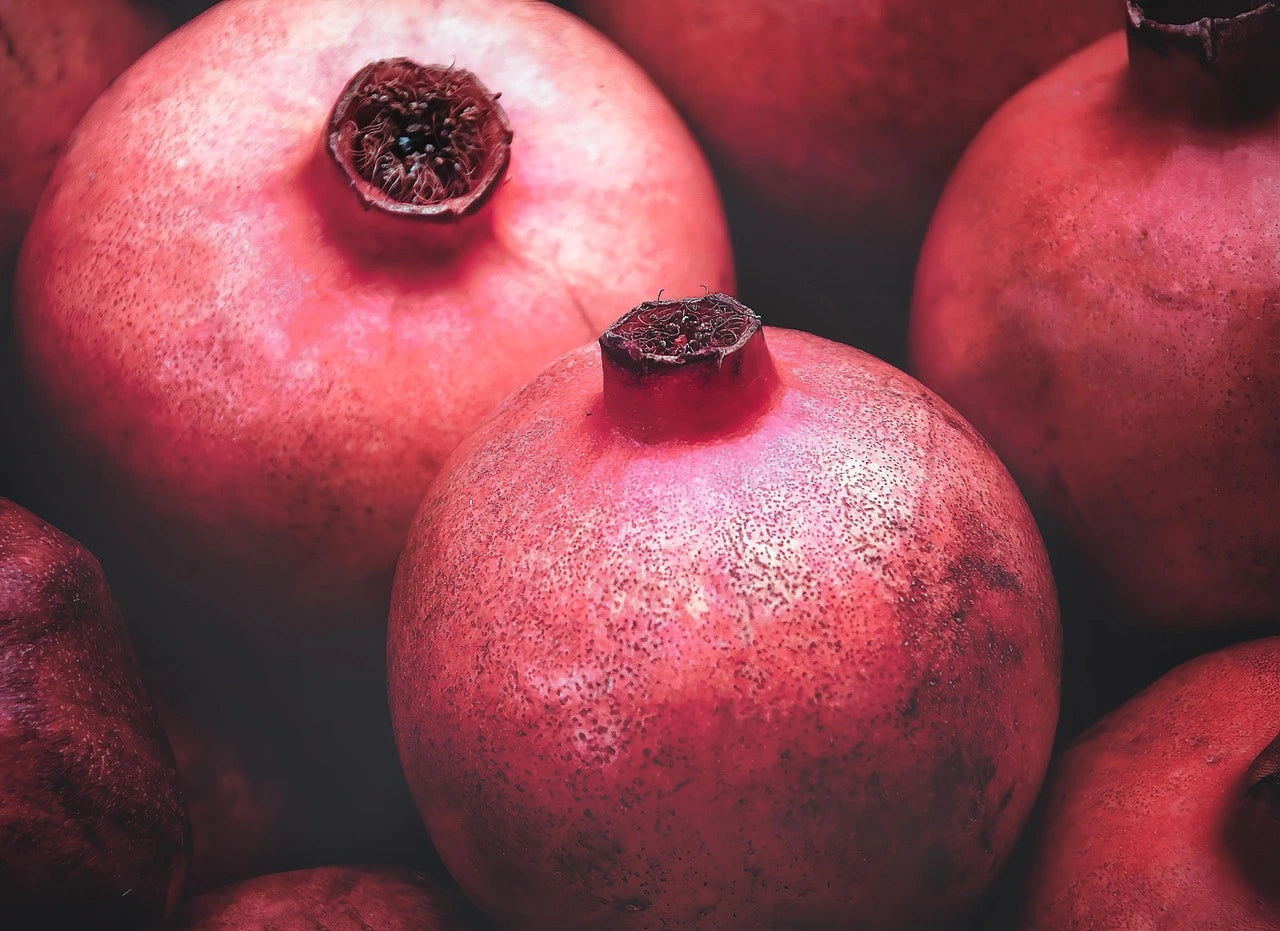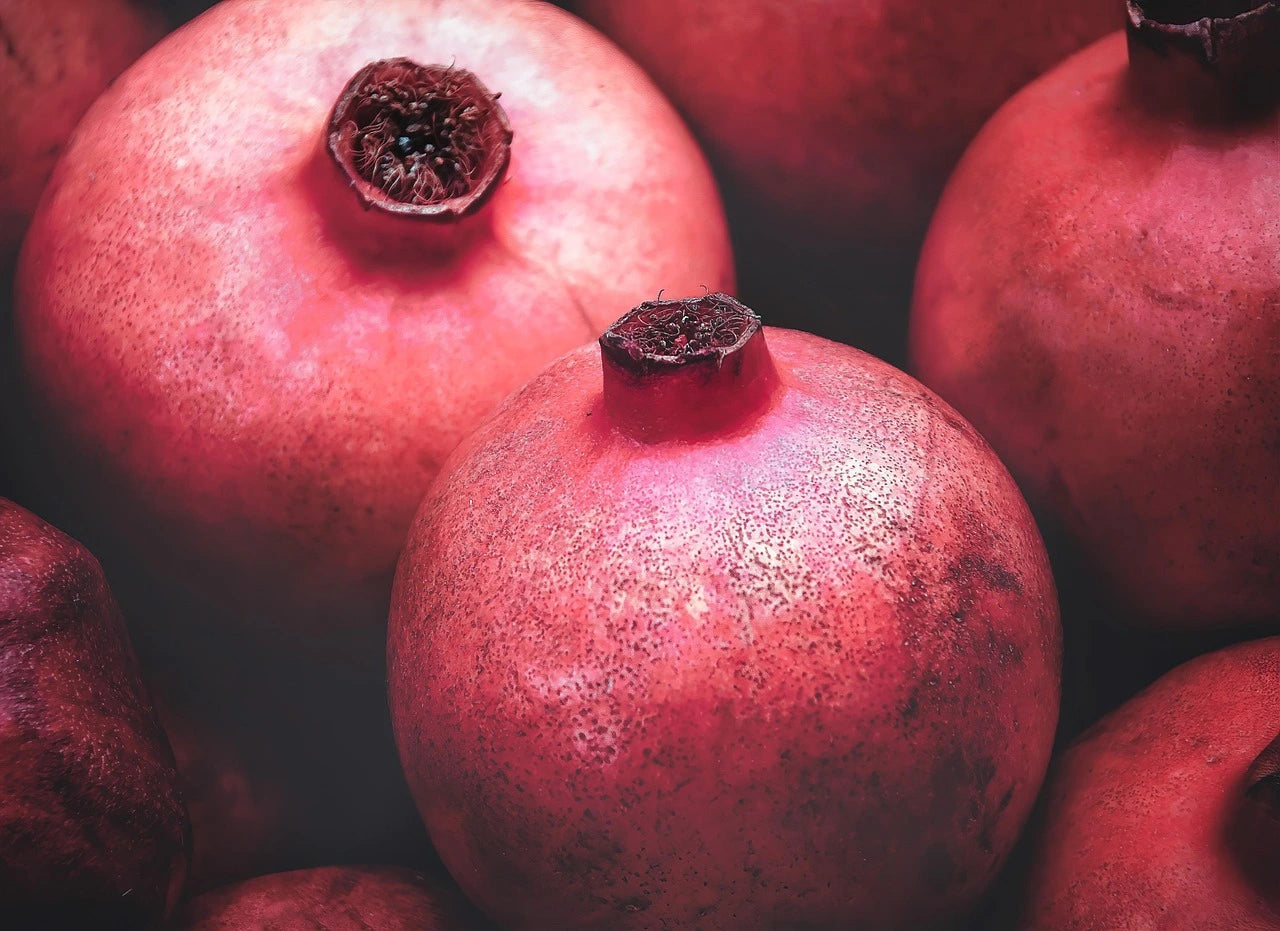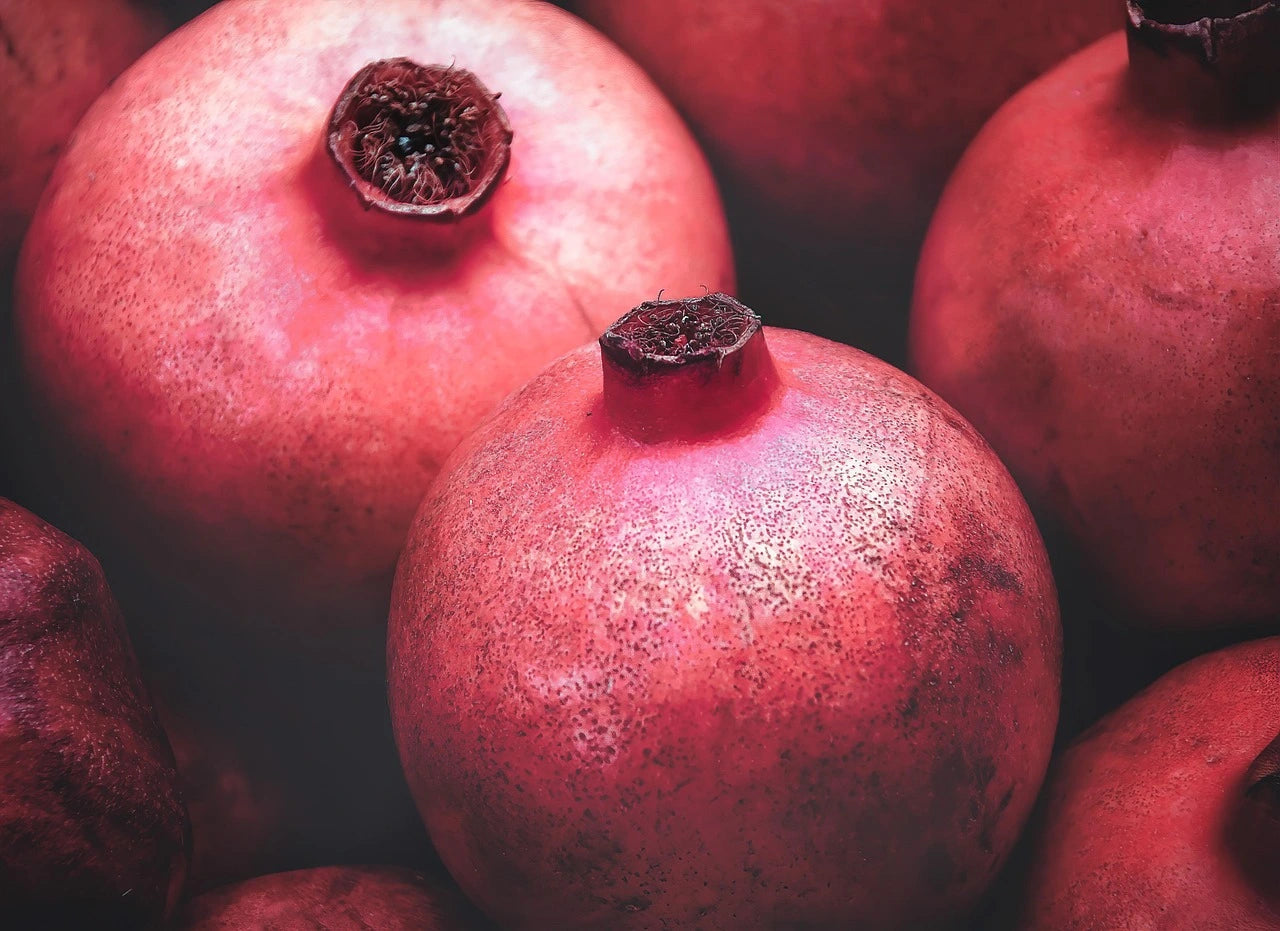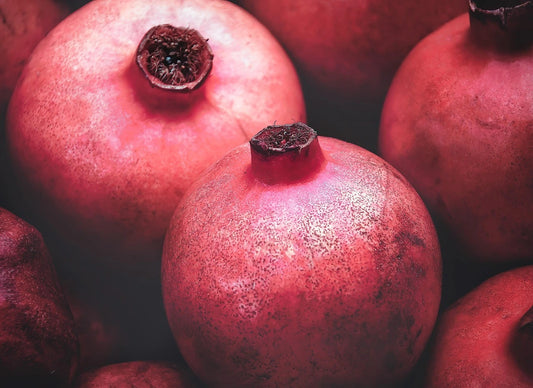-
Delivery from 10 plants within 15 days FR/ EU / CH
Delivery Terms -
Wholesale Supplier of Small Fruit Plants
About Us -
Quality Small Fruit Plants
Technical itinerary for small fruits -
Secure payment
Our Payment Terms
Organic Pomegranate Provence Douce Plant - 2-year-old bare-root plants
Organic Pomegranate Provence Douce Plant - 2-year-old bare-root plants
Price € excluding VAT per unit excluding transport. Our prices are based on volume. We offer you the best option based on your needs.
Couldn't load pickup availability
 Buy now and get it delivered when you're ready to plant - Add your desired date to your quote request
Buy now and get it delivered when you're ready to plant - Add your desired date to your quote request
 Delivery from 10 plants within 15 days FR/ EU / CH
Delivery from 10 plants within 15 days FR/ EU / CH
Ce plant de petit fruit est un plant racine-nue
Il reprend aussi bien qu'un plant de petit fruit en godet mais ne se stock pas du fait qu'il n'a pas de motte de terre pour stocker l'eau et les nutriments. A planter rapidement à réception. Les plants de petits fruits racine-nues représentent le meilleur compromis entre coût et qualité
These small fruit plants for professionals are certified organic AB
Buying professional organic berry plants from AB allows you to produce organically. Fruits can be sold organically.
Quand Planter / Quand Récoler les Grenades ?
Vous souhaitez cultiver des Grenades mais vous ne savez pas quand les planter ? Vous souhaitez savoir quand vous allez récolter ? Consulter notre Calendrier de plantation et récolte pour les Grenades
View full details
Quality Provence Douce Grenadier for professional market gardeners
Technical sheet for the Provence Douce Grenadier variety - Pomegranate with slightly pinkish red fruits
The Pomegranate Plant of Sweet Provence
- Tree size when fully grown: 4 meters
- Self-fertile / Self-sterile plant (male / female): Self-fertile variety
- Disease resistance / Hardiness / Storage: Very hardy, resistant to -17°C. This is the most cold-resistant variety.
- Origin of the variety: Originally from France
- Productivity of the Provence Douce Pomegranate: 70kg of fruit per tree at maturity. Medium-sized fruit
The Pomegranate of Sweet Provence
- Fruiting Period / Harvest Period: Long harvest period (late September to mid-November)
- Fruit size and shape: Fruits up to 600 grams, between 8 and 12 cm in diameter
- Fruit Color: Slightly pinkish red
- Flesh Color: Pink
- Fruit taste and commercial use: Juicing variety because of hard seeds. Sweet. Seeds burst easily, must be blended with redder-fleshed varieties for juicing.
FAQ about the Grenadier Provence Douce
Is the Provence Douce pomegranate easy to grow?
Yes, the Provence Douce Pomegranate is very hardy and easy to grow, especially in cold climates. It can withstand temperatures down to -17°C.
When can I harvest the fruits of the Provence Douce Pomegranate?
The harvest period for the Provence Douce Pomegranate extends from late September to mid-November, offering a long period of availability of fresh fruit.
What is the size of the Provence Douce pomegranate fruit?
The fruits of this variety can reach up to 600 grams, with a diameter of 8 to 12 cm.
Is the Provence Douce Pomegranate disease resistant?
Yes, this variety is extremely hardy and cold-resistant, making it an excellent choice for harsh climates.
Is the Provence Douce pomegranate self-fertile?
Yes, the Provence Douce Pomegranate is a self-fertile variety, meaning it can produce fruit without needing another plant for pollination.
Is the Provence Douce Pomegranate suitable for juice production?
Yes, this variety is particularly suitable for juicing. However, the seeds are hard and burst easily, often requiring blending with redder-fleshed varieties.
-
Organic Pomegranate Provence Douce Plant - 1-year-old bare-root plants
Regular price €7,15 EURRegular priceUnit price / per -
Pomegranate Plant Provence Douce Bare Roots 1 year Organic - online sale
Regular price €7,50 EURRegular priceUnit price / per -
Organic Pomegranate Provence Douce Plant - 2-year-old bare-root plants
Regular price €8,45 EURRegular priceUnit price / per -
Organic Pomegranate Provence Douce Plant - 2-year-old plants in 4L pot
Regular price €11,00 EURRegular priceUnit price / per
Additional / Useful information:

Which variety of pomegranate should you choose? Characteristics and uses of pomegranates
Planting and Harvesting Calendar for Pomegranates
When to plant pomegranates? When to harvest pomegranates?
Do you want to start growing pomegranates but don't know when to plant them? Do you also want to know when you'll be harvesting them?
On this page you will find the planting and harvesting periods for each variety of pomegranate.
| Grenadiers | Jan | Feb | Mar | Apr | May | Jul | Jul | Aug | Sep | Oct | Nov | Dec | Harvest rate / Production yield | |||||||||||||
|---|---|---|---|---|---|---|---|---|---|---|---|---|---|---|---|---|---|---|---|---|---|---|---|---|---|---|
| Grenadier Acco | Planting | Yields 3 to 4 years after planting | ||||||||||||||||||||||||
| Harvest | ||||||||||||||||||||||||||
| Grenadier Iliana | Planting | Yields 3 to 4 years after planting | ||||||||||||||||||||||||
| Harvest | ||||||||||||||||||||||||||
| Grenadier Mollar De Elche | Planting | Yields 3 to 4 years after planting | ||||||||||||||||||||||||
| Harvest | ||||||||||||||||||||||||||
| Grenadier Wonderful | Planting | Yields 3 to 4 years after planting | ||||||||||||||||||||||||
| Harvest | ||||||||||||||||||||||||||
| Rugalate Grenadier | Planting | Yields 3 to 4 years after planting | ||||||||||||||||||||||||
| Harvest | ||||||||||||||||||||||||||
| Grenadier Fleshman | Planting | Yields 3 to 4 years after planting | ||||||||||||||||||||||||
| Harvest | ||||||||||||||||||||||||||
| Grenadier Provence | Planting | Yields 3 to 4 years after planting | ||||||||||||||||||||||||
| Harvest | ||||||||||||||||||||||||||
| Grenadier Hermione | Planting | Yields 3 to 4 years after planting | ||||||||||||||||||||||||
| Harvest | ||||||||||||||||||||||||||
| Grenadier Hermione | Planting | Yields 3 to 4 years after planting | ||||||||||||||||||||||||
| Harvest | ||||||||||||||||||||||||||
| Grenadier Vkushny | Planting | Yields 3 to 4 years after planting | ||||||||||||||||||||||||
| Harvest | ||||||||||||||||||||||||||
Acco Pomegranate: Planting and Harvesting Period
The Acco pomegranate tree is planted from October to November or from February to May. The fruiting/harvesting period for the Acco pomegranate tree is from mid-September to mid-October.
Iliana Pomegranate: Planting and Harvesting Period
The Iliana pomegranate tree is planted from October to November or from February to May. The fruiting/harvesting period for the Iliana pomegranate tree is from mid to late September.
Pomegranate Mollar De Elche: Planting and harvesting period
The Mollar de Elche pomegranate tree is planted from October to November or from February to May. The fruiting/harvesting period for the Mollar de Elche pomegranate tree is not specified.
Wonderful Pomegranate: Planting and Harvesting Time
The Wonderful Pomegranate is planted from October to November or from February to May. The fruiting/harvesting period of the Wonderful Pomegranate is from late September to late October.
Rugalate Pomegranate: Planting and Harvesting Period
The Rugalate pomegranate tree is planted from October to November or from February to May. The fruiting/harvesting period for the Rugalate pomegranate tree is between mid and late October.
Fleshman Pomegranate: Planting and Harvesting Time
The Fleshman pomegranate is planted from October to November or from February to May. The fruiting/harvesting period of the Fleshman pomegranate begins as early as the end of September.
Pomegranate Provence Douce: Planting and harvesting period
The Provence Douce pomegranate tree is planted from October to November or from February to May. The fruiting/harvesting period for the Provence Douce pomegranate tree is from late September to mid-November.
Hermione Pomegranate: Planting and Harvesting Period
The Hermione pomegranate tree is planted from October to November or from February to May. The fruiting/harvesting period for the Hermione pomegranate tree is from mid to late October.
Seedless Pomegranate: Planting and Harvesting Time
Seedless pomegranate is planted from October to November or from February to May. The fruiting/harvesting period for Seedless pomegranate is mid-October.
Vkushny Pomegranate: Planting and Harvesting Period
The Vkushny pomegranate tree is planted from October to November or from February to May. The fruiting/harvesting period of the Vkushny pomegranate begins from the beginning of October.
French Small Fruit Market in 2025
The berry market in France offers promising opportunities for market gardeners in 2025, thanks to growing demand for these prized fruits, both fresh and processed. Despite challenges related to climatic hazards, international competition, and production costs, producers can take advantage of regional specificities, financial support, and varietal innovations to develop this high-value-added sector, particularly in organic and short supply chains.
Presentation and commercial uses
Small red fruits include various species such as raspberries , gooseberries , blackcurrants and blueberries . They are generally shrubs or bushes producing edible berries appreciated for their taste and nutritional qualities . Their main commercial uses in France are:
- Fresh produce sales in markets and supermarkets, in high demand during the summer season
- Processing into jams, coulis, syrups and other derivative products
- Use in baking and catering
- Direct sales on the farm and through short supply chains, promoting local production
- Supplying the food industry (yogurts, desserts, etc.)
These fruits benefit from a positive image among consumers, associated with taste pleasure and health benefits . Their cultivation makes it possible to enhance the value of small agricultural areas, offering interesting opportunities for market gardeners .
Recent market developments
The French berry market has seen mixed developments in recent years. For the conventional market, there has been a slight increase in cultivated areas, particularly in Bourgogne-Franche-Comté, which accounts for 44% of national blackcurrant production . However, volumes have fluctuated due to climatic hazards. Regarding organic, despite a general downward trend in areas under conversion (-28% in 2022), the organic berry sector has held up better thanks to sustained demand . Certified organic areas increased by 8%, reflecting growing consumer interest in local organic products .
- Conventional market: Slight increase in surface area, variable volumes
- Organic market: Growth in certified areas (+8%), decrease in conversions
- Growing demand for local and organic products
- Organic fruit and vegetable market share stable at 6.7% in volume and 7.9% in value in 2024
- Less marked decline in volume purchases for organic fruit and vegetables compared to conventional ones
Current market status
The French berry market is currently experiencing mixed dynamics. For the conventional market, cultivated areas remain stable, with a slight upward trend for certain species such as strawberries. Production volumes fluctuate depending on climatic conditions, but there is growing demand for tropical fruits such as avocados, whose consumption reached 150,000 tonnes in 2023 . The organic market, meanwhile, is experiencing a slowdown after years of strong growth. Certified organic areas for fresh fruit will represent 30,269 ha in 2022, with a notable drop in conversions (-23%) . Despite this decline, organic still represents 27% of the French fruit-growing agricultural area, demonstrating a resilient sector in the face of current economic challenges .
- Conventional: Stability of surfaces, increasing demand for certain exotic fruits
- Organic: 30,269 ha certified, slowdown in conversions but maintenance of a significant share (27% of the fruit UAA)
- General trend: Decrease in volumes purchased (-10% organic, -6% conventional), but increase in the average basket
Producing regions and terroirs
The production of small fruits in France is concentrated in several key regions, each with its own specificities:
- Hauts-de-France: Leading gooseberry producing region (27% of national areas) . Aisne specializes in raspberries, Oise in blackcurrants, and Nord-Pas-de-Calais in strawberries .
- Rhône-Alpes: Main production area for raspberries and redcurrants .
- Burgundy: Important for blackcurrant cultivation, particularly in the communes of Arcenant, Echevronne, Fussey .
- Loire Valley: Diversified production, including blueberries, raspberries and redcurrants .
- Aquitaine and Limousin: Major areas for blueberries .
Favorable regional specificities include:
- Acidic to neutral, well-drained soils for most small fruits .
- Temperate climate with good sunshine, crucial for the development of aromas .
- Altitude (e.g. 900m on average in Velay) allowing for deseasonal production .
These varied conditions allow France to cultivate a wide range of small fruits, adapted to local terroirs.
Cultural requirements and varieties
Small fruits require specific growing conditions for optimal production. The main varieties grown in France include Gariguette and Mariguette for strawberries, and Patriot for blueberries . These fruits generally prefer well-drained soils, rich in organic matter, with a slightly acidic to neutral pH (5.5-7.0) . Irrigation is crucial, especially for strawberries and raspberries, with a drip system recommended . Planting density varies depending on the species: 30 cm between plants for strawberries, 100-150 cm for blueberries . Yields in organic farming are generally 20-30% lower than conventionally grown. Most small fruits come into production 1-2 years after planting and remain productive for 5-10 years, depending on the species and care .
Foreign trade and competition
France occupies a modest position on the international berry market, with insufficient production to meet domestic demand. Imports play a crucial role, particularly for raspberries and blueberries, where only 15% of consumption is covered by French production . The main suppliers are Spain, Peru, Chile, and Mexico, whose combined share reaches 51.4% of fresh berry imports . This dependence on imports exerts competitive pressure on French producers, particularly in terms of price, with Spain, for example, producing tomatoes at 1 euro less per kilo . However, this situation also offers opportunities for the development of local production, particularly in short supply chains and organic, to meet the growing demand for quality French products .
Development opportunities
The French berry market offers significant opportunities for local producers, both conventional and organic. For the conventional market, diversification into berries represents a promising growth strategy, allowing the exploitation of new segments and reducing the risks associated with a single production . The growing imports of raspberries (+100%), blackberries (+150%) and blueberries (+500%) over ten years reveal significant development potential for national production .
In the organic sector, despite a recent slowdown, opportunities remain numerous. Institutional aid, such as the "Ambition Bio 2017" program, aims to double the area under organic farming . Consumer demand for local and traceable organic products remains strong, offering opportunities in short supply chains, supermarkets and artisanal processing. Producers can benefit from investment aid from various organizations such as Regional Councils or FranceAgriMer to develop their organic projects .
Profitability and financial aid
Organic berry production has production costs that are approximately 20 to 30% higher than conventional production, mainly due to higher labor costs and generally lower yields . However, the selling prices of organic berries are on average 44% higher than their conventional equivalents, which helps to offset these additional costs . Potential profitability remains attractive, with gross margins reaching €15,000 to €20,000/ha for certain species such as raspberries or blueberries, compared to alternative crops such as cereals .
To support this sector, several aid schemes are available. Conversion aid (CAB) and maintenance aid (MAB) offer financial support to organic producers, with amounts varying depending on the crops . The organic tax credit, increased to €3,500, is also available to farms generating more than 40% of their income from organic products . In addition, an exceptional support fund of 105 million euros has been set up in 2024 to help organic farms that have suffered economic losses, demonstrating the commitment of public authorities to this promising sector.
Sector challenges and risks
The market for both conventional and organic berries is facing significant challenges. In the conventional sector, international competition, particularly from Poland, is exerting strong pressure on prices . Climatic hazards can lead to production losses ranging from 30 to 70% depending on the plots, while phytosanitary risks increase with a limited number of approved products . In addition, the presence of pesticide residues in more than 70% of conventional fruits raises concerns among consumers .
For the organic market, the main constraints are linked to high production costs, resulting from a more labor-intensive cultivation method . Strict regulations involve regular inspections and costly certifications. Competition is intensifying in the organic market, with supply growing faster than demand, putting downward pressure on prices . Organic berries cost 30% to 50% more than their conventional counterparts, which may hinder their adoption by consumers .
Innovations and future perspectives
The berry sector in France is experiencing a promising dynamic of innovation. Research is focusing on developing varieties that are more disease-resistant and adapted to climate change, such as the ever-bearing Kwanza raspberry or the Sekoya Pop blueberry . Agroecological practices are gaining ground, with the increasing adoption of techniques such as dynamic population management and participatory selection, allowing for better local adaptation of varieties .
By 2030, the market is expected to experience sustained growth, driven by changing eating habits and growing demand for healthy, local products . The goal of some brands, such as Pink Lady, to reach 100 million annual European consumers by 2030 illustrates this potential . The integration of advanced technologies, such as nanotechnology and precision agriculture, is also expected to revolutionize farming practices, improving yields and fruit quality .
Recommendations for market gardeners
Growing small fruits offers interesting opportunities for French market gardeners, but requires careful consideration before embarking on the venture. Advantages include growing demand, potentially high margins, and the opportunity to diversify production . However, this crop presents challenges such as high installation costs, sensitivity to climatic hazards and increased international competition .
For an informed decision, here are some recommendations:
- Carefully assess your land and water resources, which are essential for the success of these crops .
- Start small to test different varieties and techniques before investing heavily .
- Favor short circuits and direct sales to maximize margins .
- Consider organic certification to meet the growing demand for local and organic products .
- Learn specific growing and disease management techniques for these delicate fruits .
- Explore the financial assistance available for organic installation and conversion .
By taking a step-by-step approach and leveraging local resources and available support, integrating berries can become a major asset for your market gardening operation.
Specialist suppliers and consultants
For professional market gardeners looking for quality berry plants or advice on planting a plot, two specialist suppliers stand out on the French market:
- Bairiverse ( https://plantspetitsfruits.com/ ): Wholesale supplier offering a wide range of small fruit plants in various formats (mini-balls, pots, pots). They offer organic and conventional plants, with a responsive sales service and fast delivery throughout France .
- Econome à Légumes ( https://economealegumes.fr/ ): Trader in plants and plant material, offering producer prices and direct delivery to the farm. They supply organic and conventional plants, with a focus on quality and customer service .
These two companies not only offer quality plants, but also personalized technical support, advice on the choice of varieties and growing routes adapted to your project. Their expertise can prove invaluable in optimizing your berry production .
FAQ Small Fruits: all our planting tips
Find here all our technical itineraries and cultivation guides to optimize your berry yields
Maximize the production and quality of your crops with our technical itineraries
Whether you're a professional market gardener, nurseryman, or crop manager, accessing best practices and technical itineraries is essential to maximizing the yield and quality of your berry harvests. Through a selection of detailed articles and guides, you can benefit from advice on planting techniques, disease and pest management, as well as methods for preserving and optimizing production.
Explore each guide to get proven solutions, specific to the challenges of your operation, and benefit from the technical support of Bairiverse , your supplier of professional quality berry plants in France.
Raspberry bushes:
Which raspberry variety should you choose? Characteristics and uses of raspberry plants
Raspberry Planting and Harvesting Calendar
Blueberry bushes
Which blueberry variety should you choose? Characteristics and uses of blueberries
Planting and Harvesting Calendar for Blueberries
Definition: Blueberry varieties High Chill, Mid Chill, Low Chill and Rabbiteye
Mulberry trees
Which variety of mulberry should you choose? Characteristics and uses of mulberry trees
Planting and Harvesting Calendar for Mulberry Trees
Gooseberry Bushes
Which Variety of Gooseberries Should You Choose? Characteristics and Uses of Gooseberries
Planting and harvesting calendar for Gooseberries
Gooseberry bushes
Which variety of gooseberry should you choose? Characteristics and uses of gooseberries
Planting and Harvesting Calendar for Gooseberries
Blackcurrant bushes
Which variety of blackcurrant should you choose? Characteristics and uses of blackcurrants




